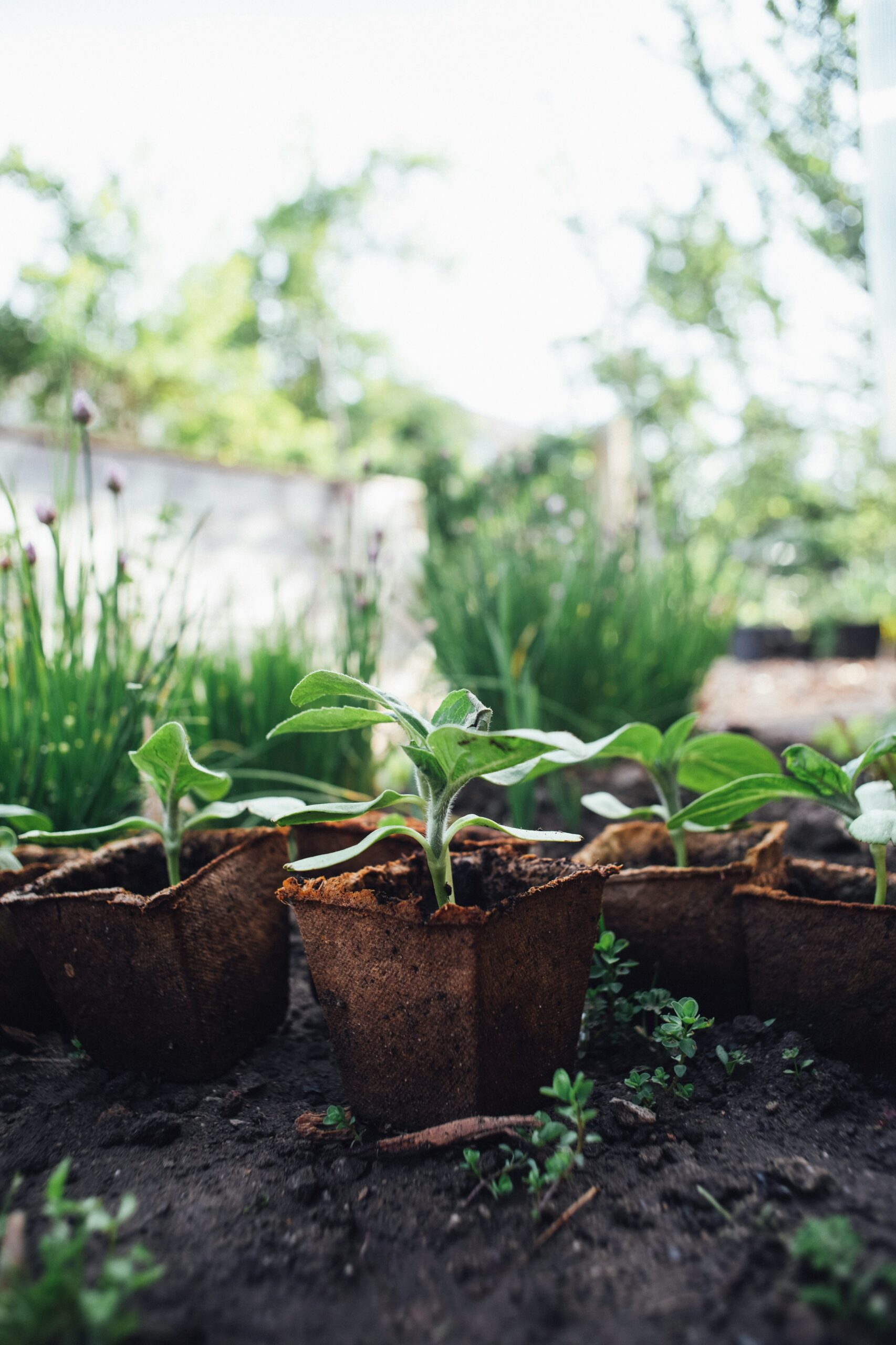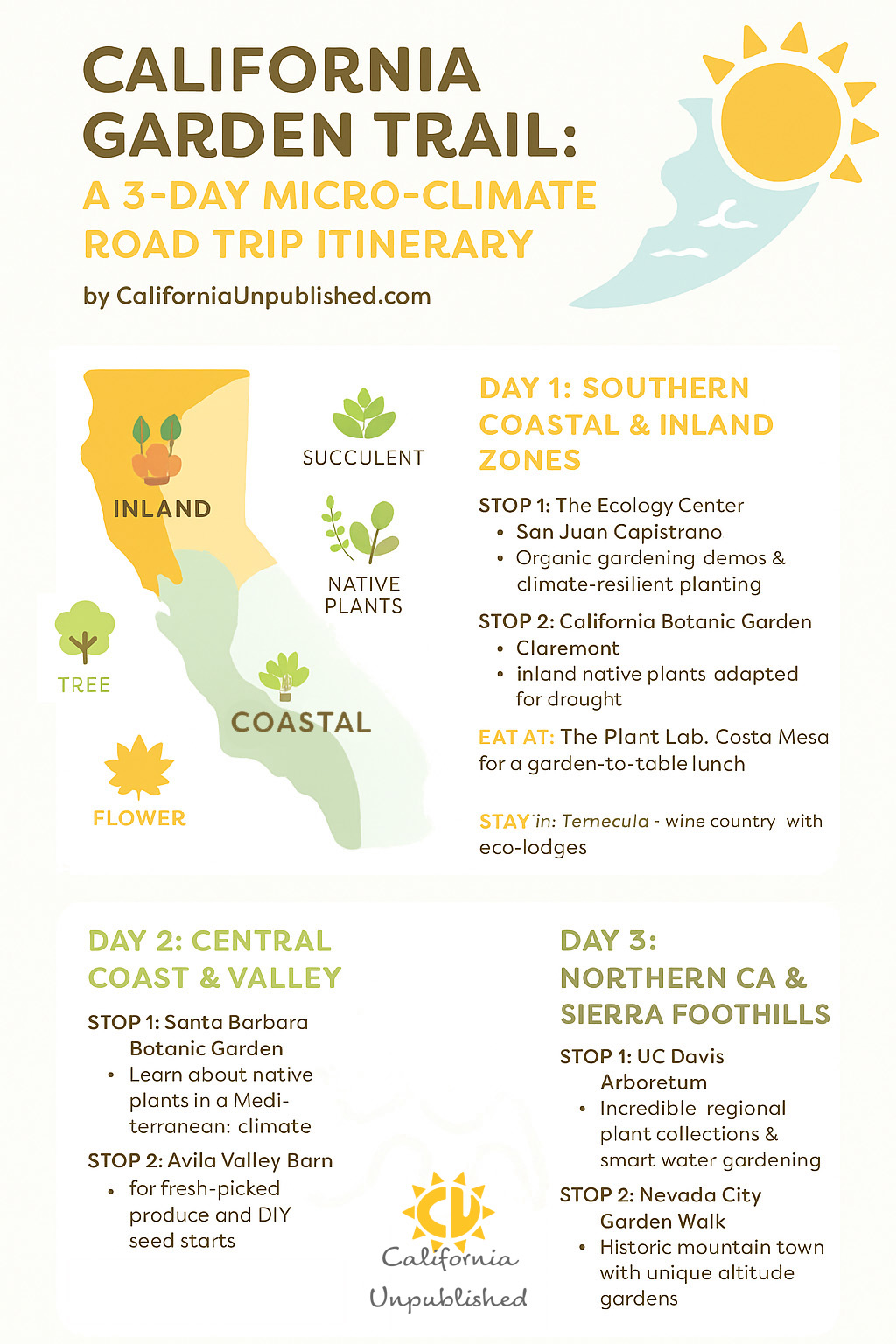California’s Micro-Climate Gardening Tips for Thriving Plants in Every Region
California is home to a remarkably diverse climate, with microclimates ranging from cool coastal zones to sunny inland valleys. This unique variation means that successful gardening in California is less about following statewide recommendations and more about understanding the ecosystem right in your backyard. Knowing how to adapt gardening strategies to your specific microclimate leads to healthier plants, better yields, and less wasted water and effort.

Whether nestled in a foggy coastal city or on a sun-baked hillside, California gardeners benefit from tailoring their plant choices and care routines to match their local conditions. By closely observing patterns like sunlight, wind, rainfall, and temperature, anyone can unlock the secrets to thriving plants and sustainable landscapes year-round.
For those searching for actionable California microclimates gardening tips, exploring the unique quirks of one's home environment can transform even challenging spaces into productive, beautiful gardens. Urban, suburban, or rural—every setting is an opportunity to make the most of California’s legendary fertile ground.
California’s Micro-Climate Gardening Tips for Thriving Plants in Every Region
Understanding California’s Microclimates
California’s diverse geography creates dramatic differences in temperature, rainfall, and humidity within short distances. From foggy coasts to arid deserts, understanding these differences can improve garden success and plant health.
Defining Microclimates
A microclimate refers to the unique climate conditions in a small, specific area that may differ from the broader regional climate. In California, microclimates often result from natural features such as hills, valleys, large bodies of water, or manmade structures like buildings and roads.
These small-scale variations mean two gardens just a few miles apart can have different frost dates, humidity levels, and exposure to sunlight. For example, urban areas create “heat islands” because asphalt and buildings hold heat, raising nighttime temperatures.
Key factors influencing microclimates include:
- Shade from trees or buildings
- Elevation differences
- Proximity to water sources
- Wind exposure
By observing these factors, gardeners can better match plants to their true growing conditions.
California Climate Zones
California hosts a remarkable spectrum of climate zones, from the cool, foggy coastal microclimates to hot inland valleys and arid desert microclimates. The USDA plant hardiness zone map divides the state into multiple zones based on average minimum winter temperatures, helping gardeners select appropriate plants for their area.
A Mediterranean climate dominates the coastal and some inland regions, with mild, wet winters and dry summers. Inland valleys, such as the Central Valley, experience greater temperature extremes and much less humidity.
Mountains introduce an entirely different set of conditions, with cooler temperatures and shorter growing seasons. Even within cities, urban microclimates can support plants unsuited to the area’s general climate, given proper care and protection from wind or frosts.
Impact of Temperature Variations and Humidity
Temperature changes play a major role in shaping California’s microclimates. Coastal regions benefit from cool ocean breezes and fog, which moderate summer heat and increase humidity. In contrast, inland areas experience hotter days and cooler nights, often with lower humidity that can stress certain plant types.
Desert microclimates are characterized by extreme temperature swings between day and night and very low humidity. Mountain microclimates tend to have colder temperatures, more frequent frosts, and higher humidity during snowmelt.
Humidity interacts closely with temperature, affecting how plants use water and how much irrigation is needed. Monitoring both temperature variations and humidity helps gardeners adjust their watering schedules, while selecting plants adapted to local microclimates will lead to better survival and growth.

Adapting Gardening Techniques for Micro-Climates
Successful gardening in California’s varied microclimates depends on targeted soil preparation, careful water management, and effective strategies for temperature extremes and wind. Using tailored techniques can boost plant health, conserve resources, and create more resilient gardens.
Optimizing Soil Health and Preparation
Soil conditions often shift dramatically between microclimates. A basic soil test is essential to determine pH, nutrient levels, and soil type. This allows gardeners to amend soils effectively with compost and organic matter, which improve structure and water retention.
They can practice sustainable gardening by incorporating crop rotation and cover cropping, which reduce erosion and support beneficial organisms. In sandy soils or areas prone to dryness, adding aged manure or leaf mold raises the soil’s water-holding capacity. Selecting plants approachable to local soil types—such as Matilija poppy or native ground covers—can reduce fertilizer use while boosting long-term soil health.
Managing Water and Mulching Strategies
Water conservation is crucial in microclimate gardening, especially in regions with irregular rainfall. Installing drip irrigation systems ensures direct delivery of moisture to roots and reduces evaporation. Rainwater harvesting with barrels or cisterns is a sustainable practice to supplement irrigation during dry spells.
Applying organic mulch (such as wood chips or straw) helps regulate soil temperature and minimize evaporation. Mulch also lessens weed competition and enhances soil structure over time. They may use rain gardens in areas of runoff to capture moisture and support thirsty plants. Effective mulching techniques might include layering 2-4 inches of organic material around plants, keeping mulch clear of stems to prevent rot.
Frost Protection and Windbreaks
Certain microclimates, especially valleys and foothills, are vulnerable to sudden frost and harsh winds. Frost protectionmethods—like covering plants with horticultural fleece or using cold frames—can shield tender crops on chilly nights. Placing rocks or water-filled jugs near plants adds warmth by releasing heat overnight.
Windbreaks are used to defend gardens from drying winds. Hedges, fences, or rows of native shrubs can serve as barriers, reducing soil moisture loss and physical damage to delicate plants. Some gardeners also position raised beds or dense plantings as buffers. These practices are essential for keeping gardens productive and sheltered in California’s microclimates.

Plant Selection and Seasonal Planting Strategies
Successful gardening in California’s varied microclimates relies on matching the right plants to specific local conditions, using thoughtful timing, and promoting a resilient, thriving garden ecosystem. Practical plant choices and seasonal approaches help maximize yields and conserve resources in both ornamental and vegetable gardens.
Choosing California-Friendly and Drought-Tolerant Plants
Plant selection should focus on species that are proven to flourish in the region’s climate extremes. California native plants are ideal for many microclimates, as they have evolved to handle drought, poor soils, and periods of intense sun or shade. Examples include manzanita, salvia, and lavender.
Drought-tolerant and drought-resistant plants such as agave and artichokes reduce water demands and support sustainable landscapes. In areas with extended dry periods, prioritizing these varieties minimizes irrigation needs. Resources like the UC Master Gardeners provide guidance on plant selection for local microclimates.
When choosing plants, gardeners should also consider USDA hardiness zones and site-specific microclimate traits such as wind, frost pockets, and sun exposure. Microclimate mapping ensures higher survival rates and healthier plants.
Seasonal and Succession Planting
Seasonal planting aligns crop timing with California’s unique weather patterns and growing seasons. Cool-season crops, such as leafy greens and root vegetables, should be planted in early spring or fall when temperatures are moderate. Warm-season vegetables like tomatoes, peppers, and squash thrive in the late spring and summer heat.
Succession planting allows for continuous harvests by staggering sowing dates or using quick-maturing varieties. For example, after harvesting lettuce in early spring, gardeners might immediately plant beans or carrots in the same bed. This method makes the most of growing space and resources year-round.
Sheet mulching, crop rotation, and taking cues from seasonal rainfall are effective strategies to enhance productivity and manage pests through natural breaks in the planting cycle.
Best Vegetables to Grow in Different Microclimates
Vegetable gardening in California can be highly productive by matching crops to each microclimate’s strengths. Coastal areas are cool and may suit leafy greens, peas, and brassicas. Inland valleys get more sun and heat, supporting tomatoes, melons, eggplant, and peppers.
Mountain microclimates have shorter growing seasons, so early-maturing root vegetables and greens are best. Artichokes and asparagus grow well where winters are mild and soils drain quickly. In shaded areas, crops tolerant of low sun such as chard, lettuce, and certain herbs can be successful.
Consider consulting climate zone maps and extension resources to guide choices for vegetable crops suited to the area’s growing season length and sun exposure.
Companion Planting and Biodiversity
Companion planting involves growing compatible plant species together to increase yields and encourage natural pest control. For instance, planting basil near tomatoes can improve tomato flavor and vitality, while marigolds deter common pests. Three Sisters planting (corn, beans, squash) is another traditional method to boost yields.
Fostering biodiversity is important for ecosystem health and garden resilience. This includes mixing flower varieties, perennial herbs, and shrubs throughout the landscape. These diverse plantings attract beneficial insects and pollinators, help suppress weeds, and break pest cycles.
By integrating native species with diverse crop types, gardeners increase garden stability and reduce the need for chemicals, supporting a more robust garden environment.

Sustainable Maintenance and Pest Management
Sustainable gardening in California’s micro-climates depends on using earth-friendly fertilizers, managing pests responsibly, and supporting a thriving local ecosystem. Key practices maximize plant growth, conserve resources, and reduce negative impacts on soil, water, and wildlife.
Organic Fertilizers and Soil Amendments
Gardeners in California often improve soil fertility using organic fertilizers such as compost, worm castings, and aged manure. These materials release nutrients slowly, which helps maintain steady plant growth without excessive runoff. Composting kitchen and yard waste reduces landfill burden and turns organic matter into nutrient-rich soil amendments.
Key organic amendments include:
- Compost
- Aged manure
- Bone meal and blood meal
- Worm castings
Applying these amendments builds soil structure, retains moisture, and supports beneficial microbes. Using organic matter in raised beds or vertical gardening systems can optimize growing conditions for vegetables and ornamentals. Incorporating local mulch further slows evaporation and suppresses weeds.
Integrated Pest Control Approaches
Sustainable pest management uses integrated strategies focused on prevention, monitoring, and targeted action. Emphasizing non-chemical methods such as manual removal, physical barriers, and biological controls reduces reliance on pesticides. Natural pest control might involve introducing beneficial insects like ladybugs and lacewings to control aphids and mites.
Key components of integrated pest management in California include:
- Regular inspection for pests and disease
- Encouraging natural predators
- Crop rotation and companion planting
- Using least-toxic solutions only when needed
Minimizing broad-spectrum chemical use helps protect pollinators, soil organisms, and nearby waterways. Integrated approaches support overall garden sustainability.
Supporting Wildlife Habitat and Biodiversity
Gardens that provide diverse habitats contribute to healthy ecosystems and natural pest regulation. Planting a variety of native and drought-tolerant species supports birds, bees, and other pollinators. Features like birdbaths, logs, and native shrubs create shelter and food sources for wildlife.
Incorporating vertical gardening, hedgerows, and small water features can enhance biodiversity even in small spaces. Certification programs encourage California gardeners to develop landscapes that balance gardening practices with habitat conservation. Supporting a complex web of species naturally boosts resilience and reduces the need for artificial pest control tools.
3-Day Road Trip Itinerary: “California Micro-Climate Garden Trail”
Day 1: Southern California Coastal & Inland Zones
- Stop 1: The Ecology Center in San Juan Capistrano – Organic gardening demos & climate-resilient planting.
- Stop 2: California Botanic Garden, Claremont – Inland native plants adapted for drought.
- Eat at: The Plant Lab, Costa Mesa for a garden-to-table lunch.
- Stay in: Temecula (wine country with eco-lodges)
Day 2: Central Coast & Valley
- Stop 1: Santa Barbara Botanic Garden – Learn about native plants in a Mediterranean climate.
- Stop 2: Avila Valley Barn for fresh-picked produce and DIY seed starts.
- Stop 3: Fresno's Garden of the Sun – Master Gardeners’ site on valley gardening.
- Stay in: Paso Robles or San Luis Obispo.
Day 3: Northern California & Sierra Foothills
- Stop 1: UC Davis Arboretum – Incredible regional plant collections & smart water gardening.
- Stop 2: Nevada City Garden Walk – Historic mountain town with unique altitude gardens.
- Wrap with: Farm Table in Placerville for a seasonal, garden-inspired meal.
Download And Print our California Micro-Climate Garden Trail 3-Day Itinerary Here!

🌿 Frequently Asked Questions (FAQ)
1. What is a micro-climate, and why does it matter for gardening in California?
A micro-climate is a localized climate that differs from the surrounding area. In California, these variations are caused by proximity to the coast, elevation, urban heat, and wind patterns. Understanding your micro-climate helps you choose the right plants and timing for watering, pruning, and harvesting—boosting your garden’s success.
2. How do I find out what micro-climate I live in?
You can determine your micro-climate using tools like the USDA Hardiness Zone Map, Sunset Climate Zones, or by checking with your local UC Master Gardeners group. Observing temperature, wind, humidity, and sunlight patterns in your yard also helps fine-tune your planting strategy.
3. What are the best plants for coastal micro-climates in California?
Coastal climates thrive with salt-tolerant, wind-resistant plants such as succulents, lavender, coastal sage scrub, and artichokes. These areas benefit from fog and cooler temps, so avoid plants needing high heat to ripen like melons or some tomatoes.
4. Which California micro-climates are good for growing fruits and vegetables?
Inland valleys like Central California and parts of the Sierra foothills are ideal for fruit and veggie gardening thanks to warm temperatures, rich soil, and long growing seasons. Tomatoes, peppers, zucchini, and stone fruits thrive here.
5. How can I protect my garden from temperature extremes in high desert areas?
Use mulch, shade cloth, and drought-tolerant native plants. Plant early in the season to avoid summer scorch and water in the mornings. Raised beds and soil conditioners also help manage heat retention and moisture.
6. Can I grow native plants in any California climate zone?
Yes, but it’s important to match native plants to their original habitat. For example, California poppies, yarrow, and ceanothus are versatile, while plants like redwoods or desert marigolds are better suited to specific zones.
7. What time of year should I plant in California?
Spring and fall are the best planting seasons in most California zones. However, coastal areas can garden nearly year-round, while high desert regions benefit from spring and early summer planting before extreme heat.
8. Are there eco-friendly gardening tips specific to California’s drought conditions?
Absolutely! Use drip irrigation, collect rainwater, mulch heavily, and choose drought-tolerant or native plants. California gardens benefit from low-water landscaping (xeriscaping) that still supports pollinators and biodiversity.
9. What are some must-see gardens or botanical stops in California to learn more?
Some favorites include The Ecology Center (San Juan Capistrano), UC Davis Arboretum, Santa Barbara Botanic Garden, and the California Botanic Garden in Claremont. These stops are featured in our free road trip itinerary PDF!
10. Where can I download the free gardening road trip itinerary?
You can download your printable 3-day California Garden Trail PDF right here in the post—just look for the green “Download Itinerary” button, or sign up for our newsletter to get it delivered straight to your inbox.






